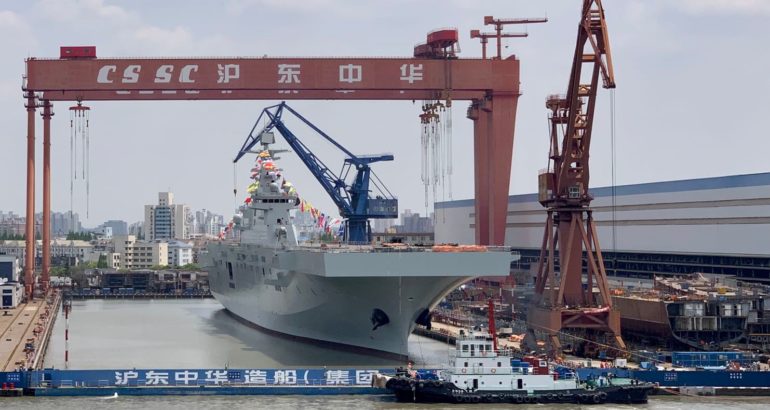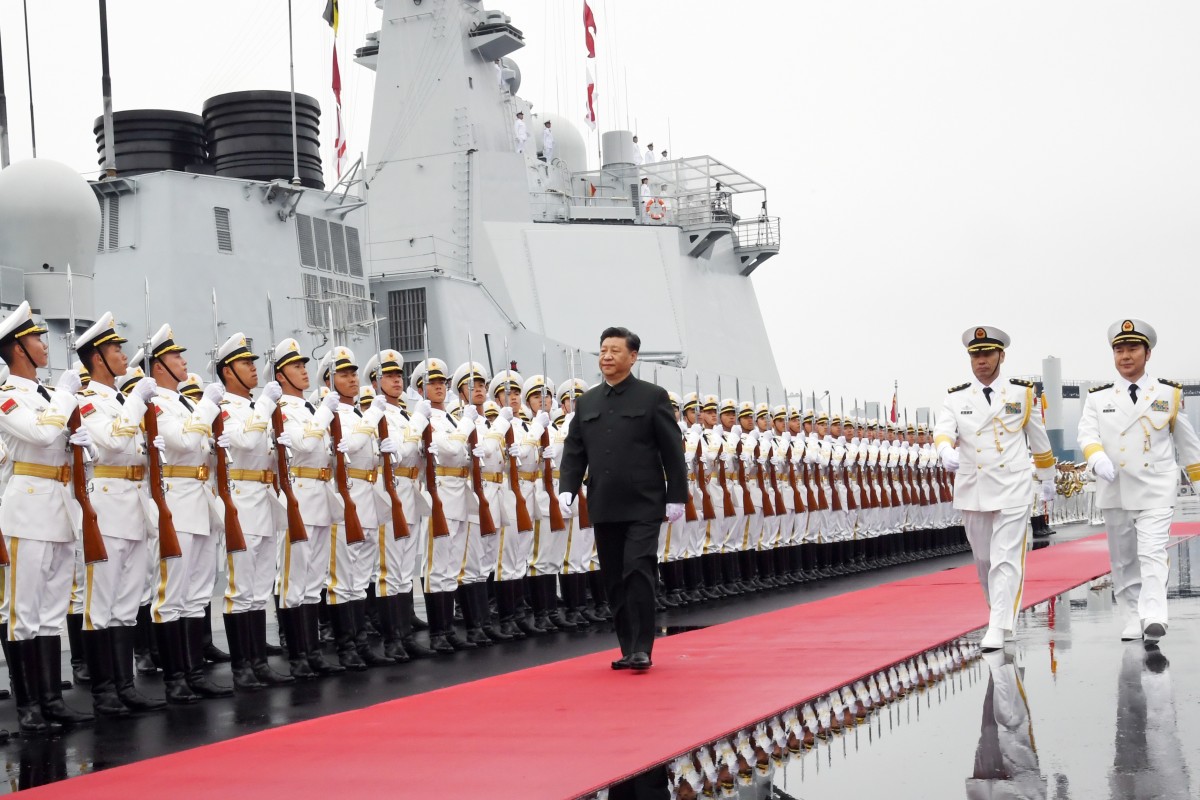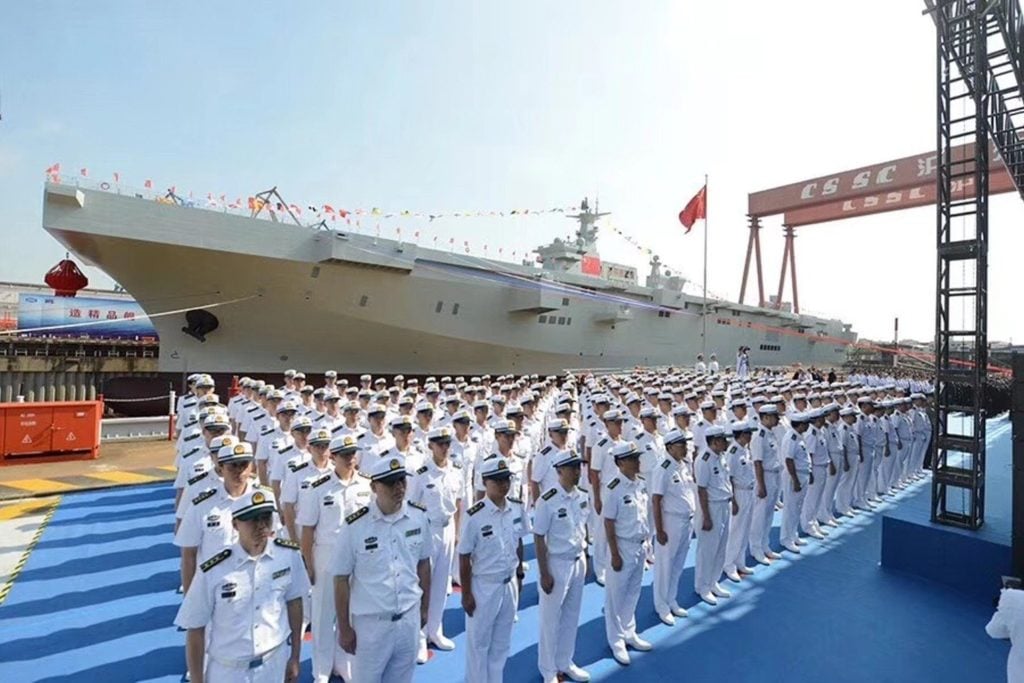USNI News / 3h
//keep unread//hide
China is bent on creating a world-class military that can conduct joint operations across the globe and already boasts the world’s largest navy, according to the Pentagon’s latest annual assessment of the Chinese military.
A “permanent condition of military inferiority is anathema” to China’s leadership and nowhere is that more obvious in its naval build-up, Chad Sbragia, deputy assistant secretary of defense for China, said during a Tuesday American Enterprise Institute forum.
The Chinese Communist Party “has become increasingly confident [of] achieving its goal” of having “a world-class military by 2049.” A key component has been China’s continuing maritime build-up from its surface forces to ballistic missile submarines. He said its fleet numbers 350 warships compared to the United States’ 293.
“I would also draw your attention to weapons systems and it’s important to highlight the Chinese shipbuilding advantages in terms of its size of the fleet, is both in context of the broader modernization ambitions, virtual class military. This is a long-term challenge and it’s not only demarcated by a single variable, which would be total number of vessels, tonnage capacity, capabilities, location, posture, activities, and then other aspects,” he told a small group of reporters in a Pentagon briefing.
Sbragia said the Pentagon expects the Chinese fleet will number 360 warships by the end of this decade.
He added in the AEI forum that Beijing with its new confidence has become “more assertive” in its territorial disputes with its neighbors — from India to Taiwan to the South China Sea.
While “numbers are only one element” in measuring military power, China is also testing its far seas reach in exploring potential bases from Myanmar to Africa and South America.
“The global PLA military logistics network could interfere with U.S. military operations and those of our allies and provide flexibility to support offensive operations against the United States,” he told the reporters.
At the AEI event, he added Beijing is also continuing to raise its defense spending across the board — from missiles to nuclear forces to space. He said the report expects that Beijing will double its nuclear stockpile of 200 weapons over the next 10 years. “The number of warheads is not the whole picture,” he said. The investments are also being put into submarines, air-launched cruise missiles, modified bombers, “the full suite and capacity” of its nuclear program.
The report “points out that China’s near-complete lack of transparency over its nuclear forces raised legitimate questions over China’s intent as it fields larger and more capable nuclear forces. And this includes the near completion of what we consider to be a triad capacity, which would include those land-based kinds of capabilities,” Sbragia said at the Pentagon. He mentioned more road-based missile-launchers and building ground-based silos.
Sbragia pointed out at the AEI forum that China emphasized developing an intermediate-range ballistic missile program to achieve an asymmetric advantage over the United States and demonstrate that capability to bordering nations. The Intermediate-Range Nuclear Forces [INF] treaty barred the United States and Russia from the continued development of these weapons.
Moscow’s deployment of intermediate-range cruise missiles led the United States to say it was no longer bound by the treaty’s terms.
China demonstrated this capability earlier this summer in one of its largest live-fire military exercises. The missiles landed in disputed territorial waters.
Sbragia called out the Chinese for saying they are abiding by acceptable norms of international behavior and seeking peaceful resolution of disputes, but then turning around and conducting exercises like these and dismissing international tribunal rulings against them.
“We’ve increased our military actions” in response. He was referring to U.S. U-2 overflights of the exercises and freedom of navigation operations in the South China Sea and elsewhere.
“When we say we’re committed; we’re committed. We’re all in” to demonstrate an open Indo-Pacific to China, allies and partners.
 On the missile shots, “they’ve done that on purpose” to cow other claimants to those waters. “We don’t understand why the Chinese are doing that. [But] here we are again” countering a bullying China.
On the missile shots, “they’ve done that on purpose” to cow other claimants to those waters. “We don’t understand why the Chinese are doing that. [But] here we are again” countering a bullying China.
The “revisionist policies” Xi Jinping is pursuing include revising the international order of rules that have governed behavior for more than 70 years. “Things are changing rapidly” in China’s drive for great power status.
“The PLA [People’s Liberation Army] is not just to be a showpiece of modernity” in equipment to other powers and bordering nations. He added that the military command structure is also becoming more accustomed to joint operations of its forces, innovative in tactics and operations, and better skilled in what it means to operate military forces globally.
Sbragia said China’s leaders realize “its military is not 10-feet tall, but [their]aim is ultimately to be 10-feet tall.”
Closer to the Chinese mainland, Sbragia said “the unification of Taiwan, Macao and Hong Kong are essential” to Xi’s vision for Beijing’s future. “2020 has served as a critical marker for China” in the development of its amphibious forces, necessary if it were to try to take Taiwan by force.
Though not reaching all its goals, Sbragia said the “aspiration is to have compulsive and coercion tools” available. The Navy recently completed two transits through the Taiwan Strait to remind the Chinese that force is not an option in reunification.












No comments:
Post a Comment
How did you like the post, leave a comment. I would appreciate hearing from you all. Best wishes from JC's Naval, Maritime and Military News